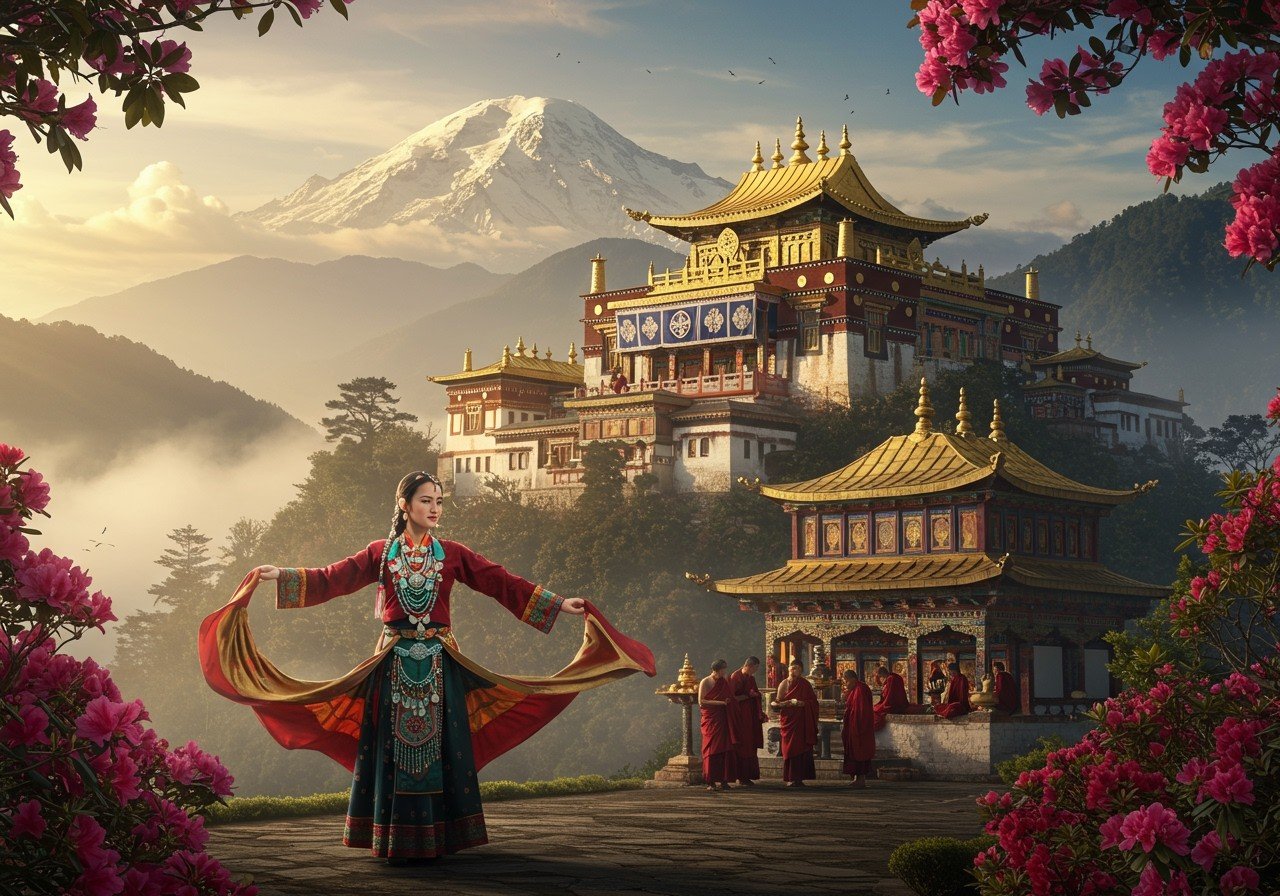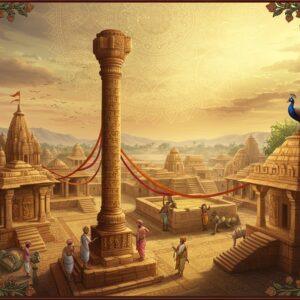
Sikkim, nestled in the Eastern Himalayas, is a land of captivating beauty and profound cultural heritage. This northeastern state of India is a vibrant blend of ancient traditions, spiritual beliefs, and breathtaking landscapes. Let’s embark on a journey to discover the heart of Sikkim, where history whispers through the wind and culture thrives in every corner.
A Glimpse into Sikkim’s Past
Sikkim’s history is a fascinating saga, shaped by the convergence of diverse communities and powerful kingdoms. The Lepchas, the original inhabitants of this land, hold a deep connection with nature and their ancestral “bone faith.” Over time, other communities, including the Bhutias (of Tibetan descent) and the Nepalese, arrived, weaving their own threads into the rich tapestry of Sikkim’s heritage. These diverse groups co-existed, sharing their customs, traditions, and beliefs, shaping the Sikkim we know and love today.
- Early Inhabitants: The Lepchas, believed to be the first settlers, coexisted with tribes like the Mon, Chang, and Naong. Their deep connection to nature shaped their spiritual beliefs. The arrival of the Bhutias in the 14th century further diversified the region’s cultural landscape, introducing Tibetan Buddhist practices and traditions.
- The Namgyal Dynasty (1642-1975): The establishment of the Namgyal dynasty in 1642 marked a significant turning point. With Phuntsog Namgyal as the first Chogyal (spiritual and temporal king), Sikkim flourished as an independent kingdom for over three centuries. Navigating territorial disputes with Nepal and Bhutan in the 18th century, Sikkim allied with the British, becoming a protectorate in 1890. This era saw the rise and fall of monarchs, the influence of British rule, and the eventual transition to Indian statehood.
- Journey to Statehood: After India’s independence in 1947, Sikkim remained a protectorate. However, the winds of change were blowing. Political dynamics shifted, and in 1975, Sikkim became the 22nd state of India, marking a new chapter in its history.
You can delve deeper into the spiritual heart of Himachal Pradesh by exploring its magnificent temples. Read our blog post on Himachal Pradesh Temples: Architecture, Spirituality, and History to learn more.
A Cultural Kaleidoscope
Sikkim’s culture is a vibrant mosaic, reflecting the harmonious blend of its diverse communities. The Lepchas, Bhutias, and Nepalese have each contributed their unique customs, languages, and traditions, creating a rich tapestry of cultural expression. This fusion of traditions is what makes Sikkim truly special.
- Religious Harmony: Buddhism and Hinduism are the predominant faiths, coexisting peacefully alongside Christianity and other beliefs. Monasteries, such as the renowned Rumtek Monastery, serve as spiritual centers, while colorful prayer flags flutter in the wind, carrying wishes of peace and well-being. Explore authentic ritual items, from butter lamps to prayer wheels, on Poojn.in, your trusted source for sacred goods.
- Festivals and Celebrations: Sikkim’s calendar is dotted with vibrant festivals. Losar, the Tibetan New Year, is celebrated with colorful masked dances and prayers. Saga Dawa, commemorating Buddha’s birth, enlightenment, and parinirvana, is a time of deep spiritual reflection. Hindu festivals like Diwali and Dussehra are also celebrated with great enthusiasm, showcasing the state’s interfaith harmony.
- Artistic Expressions: Sikkim’s artistic heritage is equally captivating. From intricate Thangka paintings to vibrant masks and wood carvings, traditional crafts showcase the skilled hands and creative minds of Sikkimese artisans. Traditional dances, like the Snow Lion Dance, bring stories to life, adding another layer to the cultural richness of the state.
For a deeper dive into the cultural heart of Manali, check out our blog post Manali Culture: Beyond Temples – Authentic Experiences.
A Culinary Journey
Sikkim’s cuisine is a delightful fusion of Tibetan, Nepali, and Lepcha influences, tantalizing taste buds with its unique flavors. Momos, steaming dumplings filled with savory goodness, are a local favorite. Thukpa, a hearty noodle soup, warms the soul on chilly mountain evenings. Gundruk, fermented leafy greens, adds a tangy twist to meals. These culinary delights are more than just food; they are a reflection of Sikkim’s diverse cultural heritage, passed down through generations.
Enhance your spiritual practices with authentic puja items. Explore our curated collection of guggal and Senna Patta (Sanay Leaves) for your dhoop and havan needs. At Poojn.in, we offer a wide range of high-quality products to enhance your spiritual journey. We also offer a beautiful Lokenath Baba Marble Dust Murti for your home altar.
Sikkim: A Timeless Treasure
Sikkim is more than just a place; it’s an experience. It’s a journey into a world where ancient traditions meet modern aspirations. It’s a celebration of diversity, where different communities live together in harmony. It’s a reminder of the importance of preserving our cultural heritage, and Sikkim stands as a shining example of how the past and present can beautifully intertwine. As you explore this enchanting land, you’ll discover a timeless treasure trove of history, culture, and spirituality.
If you are looking for unique and handcrafted puja items, visit Poojn.in for a wide selection of beautiful bamboo kulos and clay ghats.
FAQs: Unveiling Sikkim’s Cultural Heritage
What makes Sikkimese culture unique? Sikkimese culture stands out for its harmonious blend of Lepcha, Bhutia, and Nepalese traditions, creating a vibrant tapestry of customs, languages, and artistic expressions. This unique mix is reflected in everything from religious practices to culinary delights.
What is the significance of Rumtek Monastery? Rumtek Monastery is a cornerstone of Tibetan Buddhism in Sikkim. As the largest monastery in the state, it serves as a vital spiritual center, attracting monks, pilgrims, and visitors from across the globe. Its intricate architecture and serene atmosphere offer a glimpse into the heart of Buddhist spirituality.
For those seeking a deeper understanding of the Saptashrungi Devi Temple and its surroundings, we highly recommend exploring the history, significance, rituals and traditions and the nearby attractions and local culture.
How does Sikkim’s history influence its present-day culture? Sikkim’s journey from an independent kingdom to an Indian state has profoundly shaped its cultural landscape. The influences of the Namgyal dynasty, British protectorate, and the integration with India are woven into the fabric of Sikkimese identity, creating a unique blend of tradition and modernity.
What are some must-try dishes in Sikkim? Sikkim’s culinary scene is a treat for food lovers. Don’t miss out on savoring momos (steamed dumplings), thukpa (hearty noodle soup), gundruk (fermented leafy greens), and sel roti (a sweet, ring-shaped bread). Each dish offers a unique flavor profile and reflects the state’s diverse cultural influences.
How can I experience the authentic culture of Sikkim? To truly immerse yourself in Sikkimese culture, visit local villages, interact with the communities, attend traditional festivals, explore monasteries, and savor the local cuisine. Engaging with the warm hospitality of the Sikkimese people will enrich your understanding of their rich heritage.


